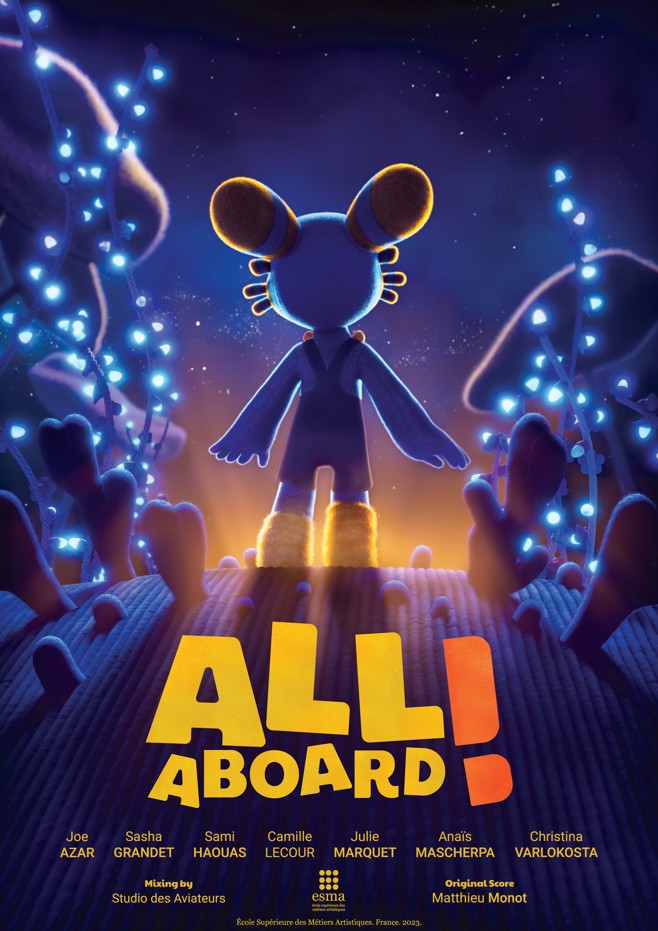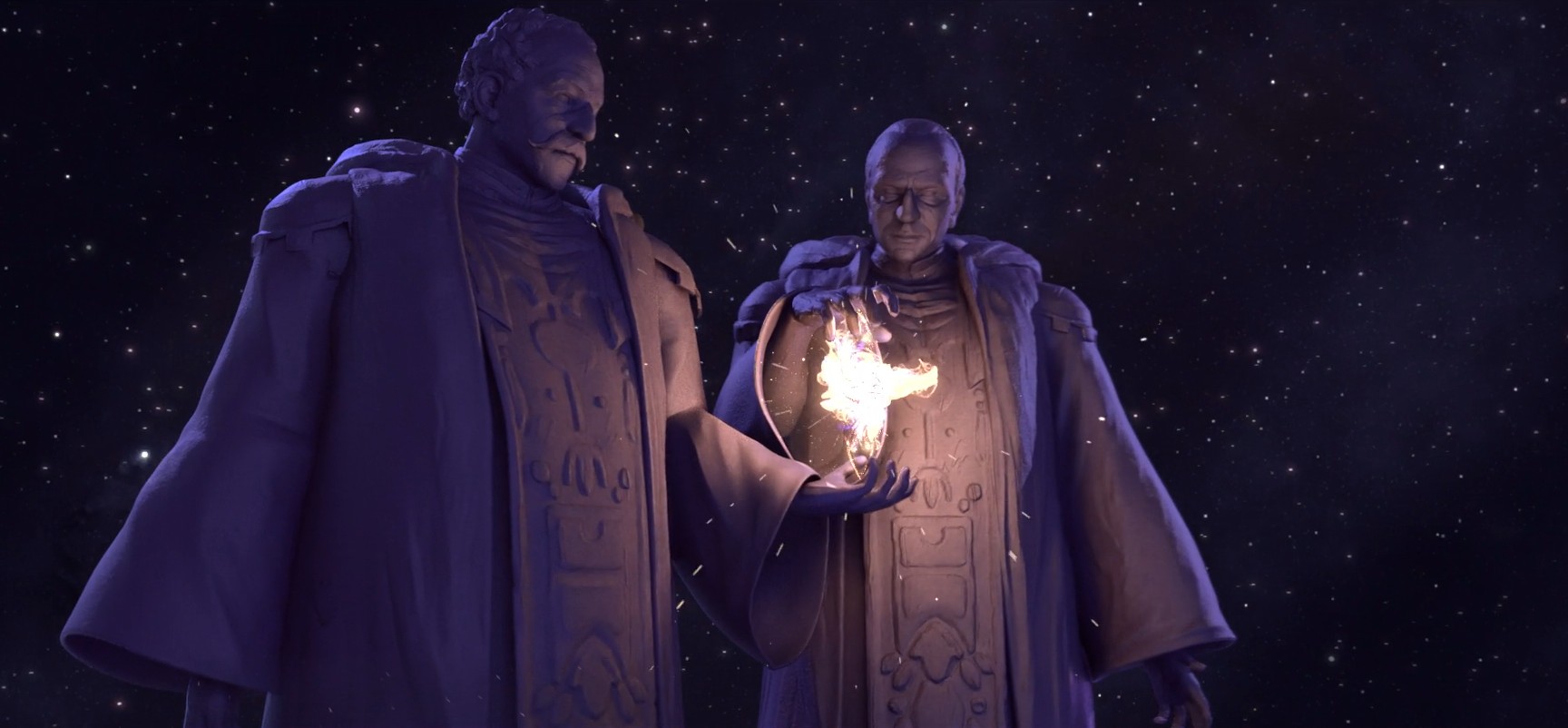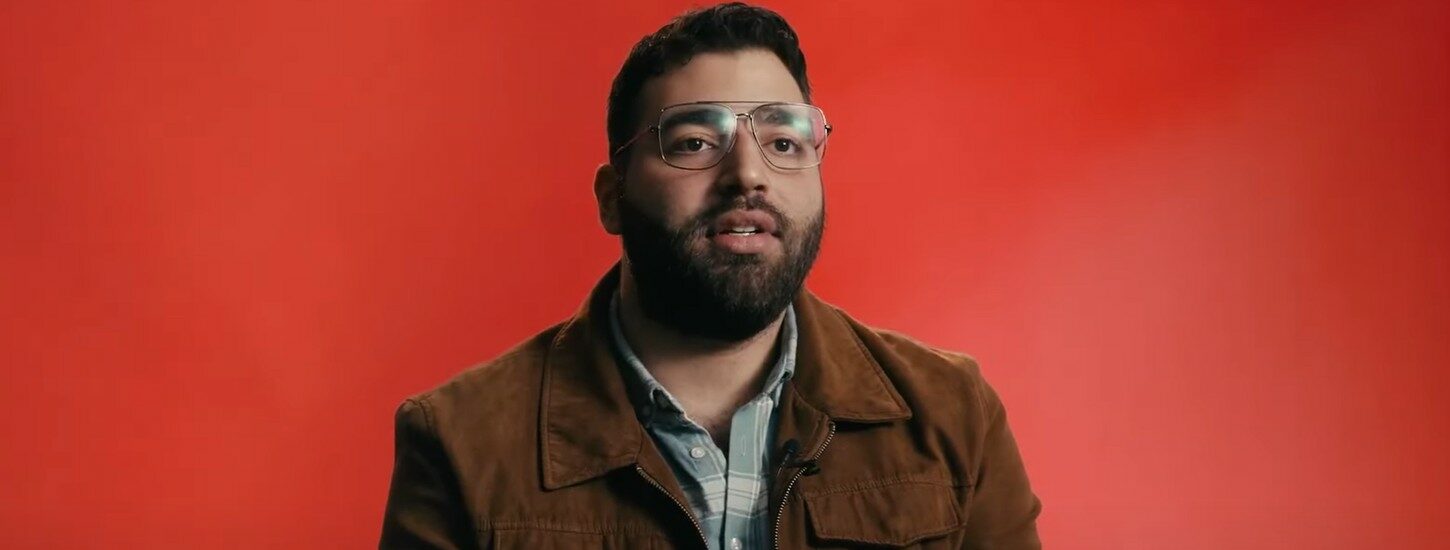
It’s a great start to a career for this student who, as his training at ESMA progressed, developed both his technical skills and his ability to coordinate teams.
Production manager on his final year short film All Aboard!, Azar has continued to explore this managerial fibre within TAT, and through additional management training.
Assistant director on the recent Falcon Express before taking up his current position, Azar also teaches scriptwriting and production, notably at ESMA, and also makes his own independent short films.
It was with a smile that this jack-of-all-trades took the time to talk to us about his student and professional career.
With a great deal of kindness, he shares his feelings and his experience of a sector in which he still enjoys sailing as much as ever.

As a production coordinator, teacher, producer and independent director, how do you juggle all these different roles?
I have to admit that it stimulates me. I have a lot of aspirations, and that’s also reflected in my career path.
It’s not the classic path for those who want to go into directing, in the sense that I’m looking for more of a managerial path and not just a creative one. When I left ESMA, I asked myself: what’s the best job for me to start out in this direction, and it was as an assistant director that my career began.
The last two years have been very rewarding, although it’s true that it’s a lot of work. But I’m thirsty to learn and understand this environment and this industry, and I’m convinced that to become a director you need to understand all the workings and issues surrounding this type of creation.
You started your career as an assistant director. Can you tell us how you got the job? It’s not often you get this kind of responsibility straight out of school!
Sometimes there are things that are beyond me, and perhaps there was a kind of ‘lucky star’, a good position at the right time. But there’s also a question of skills. Being an assistant director or production assistant isn’t necessarily a job you go straight into, because it involves both animation and a lot of management.
It was thanks to one of my teachers that I found out about this job, which I’d already seen advertised but which seemed to require too much experience. I contacted the studio anyway to find out more, and eventually applied.
It wasn’t a foregone conclusion, but once the process was underway, I put a lot of effort into the application, with a lot of work upstream, and research between the various interview and test phases.
Over and above my technical skills, I worked very much on a gut feeling, adopting the method that seemed most relevant to me, and which obviously convinced the recruiters. The fact that I was comfortable in human terms was also decisive during the interview.
In addition to your training at ESMA, you also followed a management course in the cultural industries. What drew you to this course?
I originally joined ESMA to become an animator. But I soon realised that animation wasn’t my thing. Making my own films had always been something of a dream of mine, but paradoxically I never envisaged it as a career.
It was on the benches of ESMA that this flame was rekindled, and it is what led me to complete this training.
At the same time, I wanted to learn more about the different aspects of film production, to better understand the expectations of a producer. As this second Master’s course progressed, I got into the swing of things, and today I’m myself in charge of the production of some projects with volunteer animators, and I’m also a producer on my own short films.
Arming myself with this knowledge and expertise has given me greater credibility, particularly when it comes to setting up development projects. It’s a real added value for producers. In 3D animation, it’s essential to be able to tell your story as directly as possible, while keeping in mind the technical and financial constraints of the project.
To be honest, I think these are skills that can be useful to anyone who wants to get into the industry. Understanding the issues involved in production, even if you don’t work directly in a related position, is crucial if you want to be able to work with a studio or, more broadly, a creative team.
You’ve been in the industry for two years now. How has it evolved, and what are the current challenges?
There’s no doubt that the pandemic has reshuffled all the industry’s cards, and that the news is less and less cheerful. The sector vibrates to the rhythm of the world around us, both from a narrative and an industrial point of view, but it has never been easy to make entertainment. Every era has its constraints.
The difference is perhaps that there is more communication on the subject, and everyone is aware of the situation. There are fewer projects, fewer jobs, and always more applicants, but I’m convinced that this is just the bottom of the wave. Some phases are more complicated, but animation has never been a stable sector, and I think we’re already breathing easier than we were two years ago.
In my opinion, these episodes are essential if the industry is to question itself and build a more sustainable future, both in human and financial terms.
It’s never pleasant to be in an industry in crisis, but it’s also an opportunity to question this management, to introduce change, and to move towards a renewal of animation. While I’m a realist, I’m also an optimist by nature.
What do you think will make a good animation professional in 2025?
Soft skills are the key. For the record, I knew virtually nothing about animation when I joined ESMA. My teachers (who have now become colleagues) can testify to that, it wasn’t a foregone conclusion and the first year was a real ordeal.
What made the difference was, on the one hand, the relentless work and determination, and on the other, the fact that on a human level things were going well. Teamwork means being able to help those around you, and that meant a lot to me. I make films to connect with people, and I realise today that that’s what’s most important to me.
Technical skills can always be improved, and that takes obvious work. But the work attitude, going to others, asking for help, communicating, that’s essential. And I think that’s what makes the difference: studios recruit people they want to work with.
This is even truer as a production assistant. When you’re looking for creative people, of course you’re going to look at demo tapes. But when you’re looking for production teams, it’s the people who are at the heart of the equation. You have to learn how to use software.
Speaking of software, how do new technologies such as AI fit into the way you work? Is it a threat, or a new tool?
It’s impressive, both in a negative and positive sense. It’s evolving so fast that it’s turning not only artistic practices but also economic models upside down, not to mention the questions that arise about intellectual property and so on. Yes, it’s a powerful tool, but it’s also a young tool, with its mistakes and its uncertainties, which we need to take into account when we use it. What’s certain is that it’s not going to go away, because there’s no denying that when AI is used properly, it can reduce costs and production times while increasing the final quality of the project.
I like to say that you shouldn’t be afraid. The more you’re afraid, the more likely you are to be paralysed. But this environment is constantly changing, and you have to be able to evolve with it.
That’s another piece of advice I’d like to give to schools. You have to be able to reinvent yourself, adapt, and keep up with the times in terms of tools and software. All the while not forgetting the importance of the human factor, and the ability to work as part of a team.
Today, I’m blown away by what we can do with real time, especially on series projects where the budget is lower than for feature films. These tools are at the service of creativity, and can be selected according to the type of project and the needs of each production.
Personally, I don’t use AI at the moment because I’m very attached to the artisanal production of 3D images. I don’t know how things will develop, but I think it’s vital to keep the dialogue open. There are as many techniques as there are projects, and if the people working on a project are aligned with the tools they use, then why not? We mustn’t forget that, at the end of the day, animation is still an industry that has to be profitable.
What advice would you give to students looking to enter the industry today?
Don’t be afraid, and dare. For those who are starting their studies today, it’s not impossible that the sector will have changed four or five times by the end of their training. It’s essential to dare to meet new people, to discover new things and to make mistakes if you want to succeed. I’m a great dreamer, but that doesn’t mean I haven’t been through some very difficult times myself.
What I think is crucial is to make the most of the experience, while creating what’s important to you. In that sense, the graduation film is a unique playground. It’s the perfect time to give it your all, and do what matters to you, while keeping in mind the technical constraints and the deadline. It’s a real adventure, and it would be a shame not to take advantage of it.
To conclude, I’d like to add that life does things well, but it doesn’t do them for you. You have to give yourself the means to achieve your ambitions, while knowing how to let go sometimes.
I’ve met a lot of people who blame themselves in situations where it wasn’t really up to them. There’s a reality on the ground that you have to bear in mind, and it’s essential to get the balance right.
